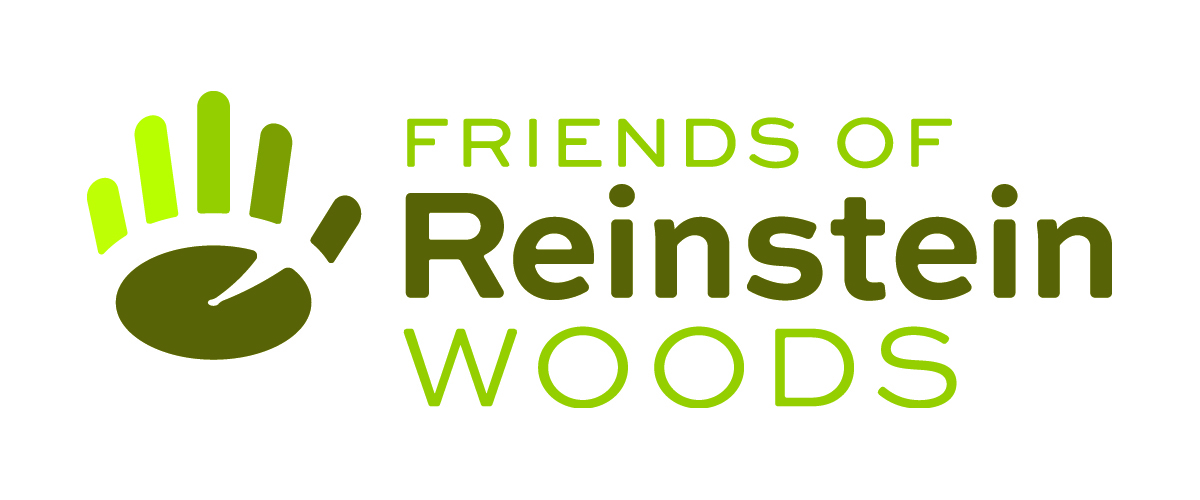Tag Archives: Day in the Life of the Buffalo River
Student Scientists Brave Rainy Weather to Study Water Quality in the Niagara River/Lake Erie Watershed
“I feel like a real-life scientist!” remarked an excited middle school student from Bennett Park Montessori School as he dove into his first “Day in the Life of the Niagara River/Lake Erie Watershed” experience.
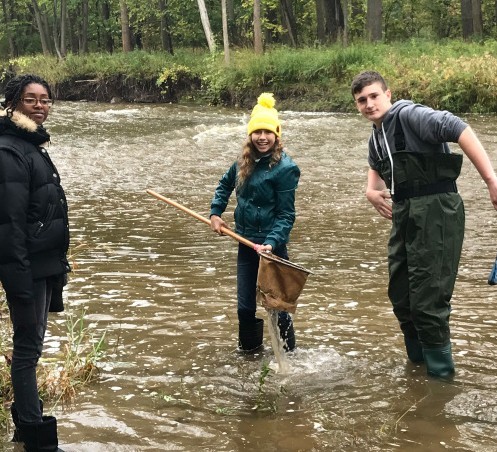
Thanks to a federal grant from the National Oceanic Atmospheric Administration (NOAA), Friends of Reinstein Woods received $66,834 to expand the “Day in the Life” program. “We get to provide students and educators with an unforgettable experience that connects them to their local waterways,” said Day in the Life program coordinator, Mary Ronan. “This grant offers the exciting opportunity to focus on our community taking action towards real environmental change through hands on learning.”
On a very gloomy October 3, more than 330 students and educators from local underserved school districts weathered the rain to collect data from 14 sites along the Niagara River, Buffalo River, and Canadaway Creek.
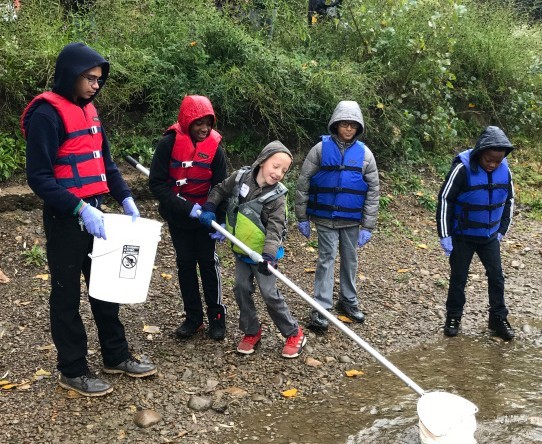
This was the sixth year of the Day in the Life program, and certainly, the biggest year yet. With the additional funds, Friends of Reinstein Woods was able to purchase updated scientific equipment, greatly expand teacher training, and provide bussing to include eight new schools. One of the new groups was Ms. Hart’s fourth grade class from Hillery Park Elementary, a Buffalo Public School.
The 16 fourth grade students in Ms. Hart’s class were assisted by eighth graders from their school who helped complete the assessments. It was a wonderful opportunity for the eighth graders to serve as mentors for the younger students. Mrs. Hart shared her enthusiasm for the active participation in our environment from all of her students.
“So often, the students are not introduced to science, technology, engineering, and math (STEM) topics until high school, so it’s a great opportunity to show them these,” said Ms. Hart. “Also, their data is used by real scientists!”
The students gained hands-on field experience using the Global Learning and Observations to Benefit the Environment (GLOBE) program protocols to collect data that will be uploaded to a global database. This will greatly enhance research and analysis opportunities. They analyzed water quality, examined what critters live in the waterway, and mapped the area to gain a greater understanding of the watershed. Each site also had a scientist from a partner organization including Buffalo Audubon Society, SUNY Fredonia, Buffalo Niagara Waterkeeper, NYS DEC, Erie County Department of Environment and Planning and more. These representatives enhanced the students’ experience by sharing their knowledge of the river, its issues, and restoration efforts. They also provided an introduction to various environmental career paths.
Throughout the 15-month project, participating educators will engage students in classroom learning using resources gained during a four-day Summer Teacher Institute and subsequent support workshops. This training provides extensive resources and training on the ecological, economical, and recreational importance of the Great Lakes. With a focus on the freshwater resource in our backyard, teachers can partake in place-based meaningful education with students.
Similarly, students completed pre-event activities to learn about their sample site, the greater Niagara River/Lake Erie watershed, and common water quality issues. In the months following the field experience, classes will participate in a stewardship action project such as continued GLOBE monitoring or habitat improvement projects. For example, students at Math, Science and Technology Preparatory School in Buffalo plan to map pervious and impervious surfaces in the schoolyard to better understand stormwater runoff and demonstrate the skills they learned through the Day in the Life program.
The expansion of the Day in the Life program is very exciting for Friends of Reinstein Woods and the Lake Erie Watershed. Through the teacher education workshops, interactive field experience for students, and stewardship action projects, more individuals are prepared to become stewards of the Great Lakes and understand the importance of this vital freshwater resource. “We can only ask students to care about what they are familiar with,” said Ronan. “The grant allows us to make connections between water and everyday life while introducing science skills and career opportunities. We are empowering the next generation of environmental stewards in Western New York.”
Students Experience “Day in the Life”
By Jill Zerkowski, Naturalist Intern
On September 29, more than 300 students, teachers and volunteers arrived on the shores of the Buffalo River and its tributaries. Equipped with tools such as nets, tubes, clipboards and data sheets, students from six schools from across western New York were ready to explore the complex relationships that are found in the Buffalo River. The fourth annual Day in the Life of the Buffalo River found students ankle deep in water, giving them a unique hands-on experience.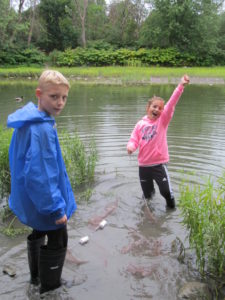
In addition to the students, teachers and volunteers, several partner organizations were on-site to help with the event. Representatives from the Erie County Park Rangers, Buffalo Niagara Riverkeeper, NYS Department of Environmental Conservation’s Great Lakes Program, and US Fish & Wildlife Service’s Lower Great Lakes Fish & Wildlife Conservation Office worked with students at ten different sites to collect data about water quality, biodiversity, create maps, as well as to share the history of the Buffalo River.
All of the data collected by the students will be posted on the web and shared between the participating classes.
Reinstein Woods gave students and educators a day they most likely won’t forget. 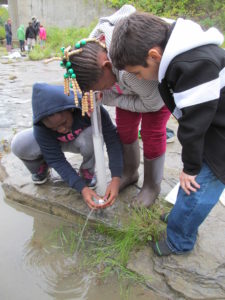 Learning to do real science, like measuring turbidity (the cloudiness in the water), is one benefit of the program. “The turbidity tube was awesome! We poured the water in (the tube), and the secchi disk actually disappeared! It was so cool when we let the water out and could see the disk again,” said one student.
Learning to do real science, like measuring turbidity (the cloudiness in the water), is one benefit of the program. “The turbidity tube was awesome! We poured the water in (the tube), and the secchi disk actually disappeared! It was so cool when we let the water out and could see the disk again,” said one student.
Brittany Rowan, Friends of Reinstein Woods environmental educator, said, “This event is a great opportunity for students to investigate this local water resource and take real-world data. It’s exciting for them to become scientists for a day.”
Special thanks to the local offices of Ingram Micro and Northrop Grumman for providing 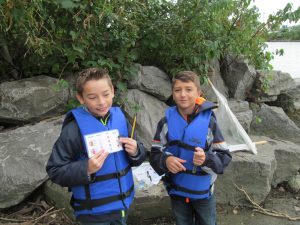 funding to support this STEM (Science, Technology, Engineering and Math) program. The Julia B. Reinstein Trust also provides financial support that makes this program possible.
funding to support this STEM (Science, Technology, Engineering and Math) program. The Julia B. Reinstein Trust also provides financial support that makes this program possible.

